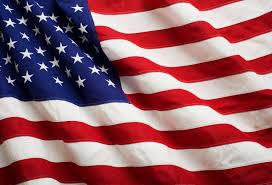Colin Kaeperneck's refusal to stand during the playing of the "Star Spangled Banner" is only the latest in a series of rows over Francis Scott Key's verses that were set to the melody of an 18th-century drinking song from an English gentlemen's club. It was more than a century after Key wrote the lyrics that Congress finally designated the song as our national anthem, and only then after six attempts and lots of opposition.
For a long time, "Hail Columbia" and "My Country 'Tis of Thee" were used at official occasions. It was only in 1889 that the Navy approved the "Star-Spangled Banner" for use at naval celebrations. However, the real rival for the status of the national anthem was "America the Beautiful."
First written as a verse by Katharine Lee Bates, a professor at the all-women's Wellesley College, in 1893 as she gazed out over the vast American plain from the top of Pike's Peak in Colorado. The poem by Bates, who lived in a so-called "Boston marriage" with her lifelong companion Katharine Conan, struck a chord with the American public. Its uplifting stanzas and vision of America as a land of great beauty, blessed by God with the hope of brotherhood for all mankind, made it instantly popular throughout the country.
It was not until 1910 - after many attempts to set Bates' verse to music - that a hymn by an obscure choirmaster, Samuel Ward, was published with Bates' lyrics. Even then, despite Ward's eminently sing-able tune and the power of Bates' lyrics, there were continuous, and often contentious, efforts to set Bates' verse to many different melodies.
As the popularity of "America the Beautiful" grew, there was a strong movement to establish it as our national anthem. When compared to "Star-Spangled Banner," it is clearly more musically and lyrically powerful, at the same time easier to sing and orchestrate. Who can forget, for example, Ray Charles' moving rendition of the song, or the multiple orchestrations and vocal performances of the song in every genre. For the most part, "Star-Spangled Banner" is notable for its lyrics that are regularly mangled by everyone from celebrities to the average Joe. Who can forget, for example, the Roseanne Barr ear-piercing rendition at a major league baseball game?
Another objection to the "Star-Spangled Banner" - aside from its obvious musical and lyrical inferiority - is its militaristic and nationalistic tone, which is not surprising since it was original considered solely a military anthem. Objections have also been raised more recently to its subtle references to slavery, which some observers consider an indirect defense of the institution.
What is clear is that the United States has a lousy national anthem. While it may have its defenders, it is difficult to dispute the fact that the "Star Spangled Banner" is inferior both musically and lyrically to the emotionally powerful "America the Beautiful." And while there may be arguments on both sides about the content of the two anthems, it is hard to argue that the current anthem is anywhere near as inspiring or uplifting as the Bates/Ward anthem. Perhaps now is the time for a better piece of music for America's national anthem.
Hoyt Hilsman is a screenwriter, author and journalist. His latest play, America the Beautiful, is the story of the struggle to have the Bates/Ward song chosen as the national anthem.

